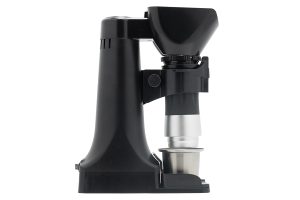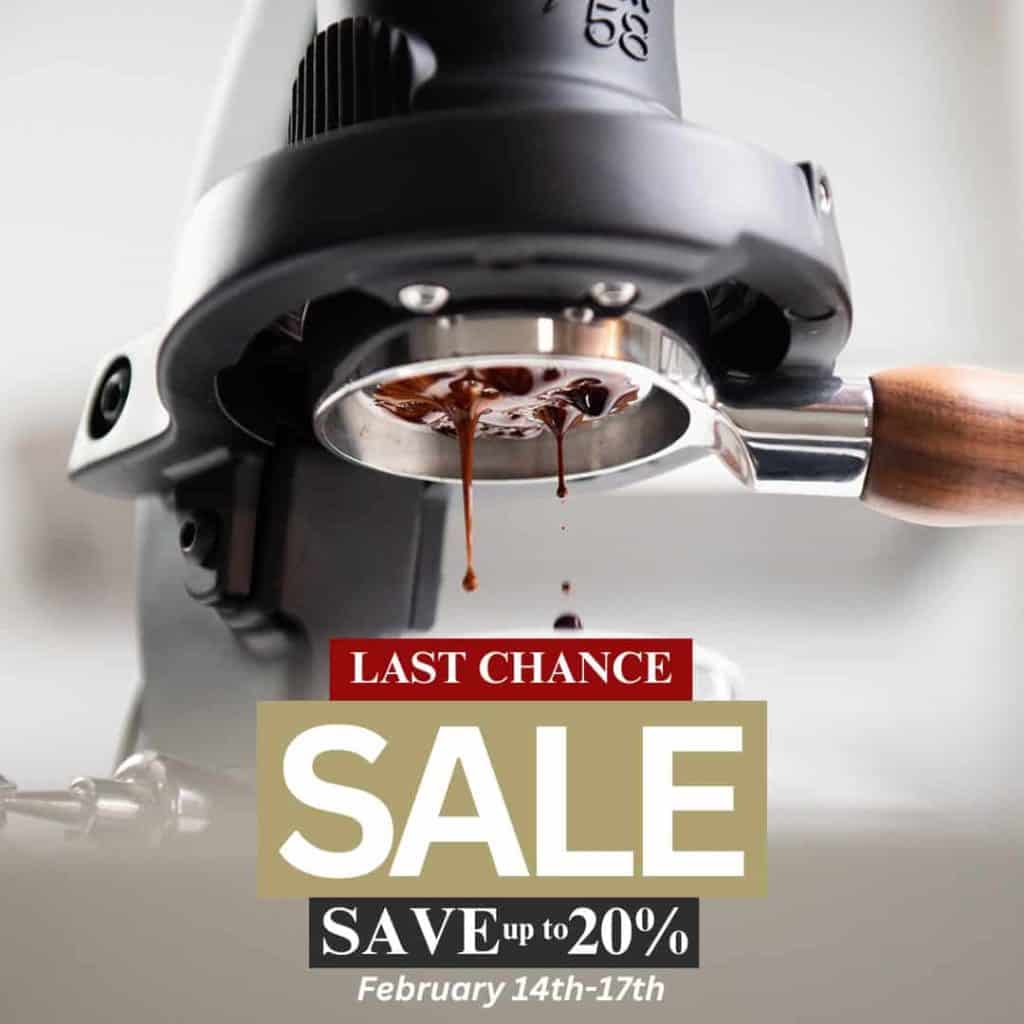Independent Flair review: John Nanci, Espresso Aficionado
John asked us if he could borrow the Flair prototype to see how it worked. With John being a long-time espresso connoisseur, espresso maker enthusiast and likely great source of feedback, we sent it off to him. Here is what he said:
“I am not a big fan of change. I like what I am used to. I start off this review this way because when I first started testing the Flair, it was more different than I expected and I got a little frustrated and a little annoyed. But, fast forwarding to the next day, I was not noticing what previously had bothered me. So, I’m going to urge you to take your time, don’t rush, and give it a chance. It’s going to take you a little bit to work out some new routines. Not because the design is faulty, but because it is different than what you are most likely used to.
As the inventor says, there is nothing there that does not have to be. Aesthetically, it is all sleek curves. But you’ve seen the photos. I received an engineering prototype, but I saw no flaws or issues.
It comes in a compact, sturdy carrying case that has a bit of molded foam protection inside. It’s slightly hard sided. I’m going to enjoy taking it on the road. I [originally] evaluated the Flair with only what I saw on the Kickstarter page. Being a prototype, there are no directions (which I am assured will be there) or the like. The best part about the design is that it goes together easily and intuitively without any directions and packs up flat when you are done. You slip the upright back support into a slot in the base and it locks in effortlessly. And that is it. You will find 6 other parts: the basket/portafilter, the cylinder or water chamber, the piston, the dual measuring cup/tamper, and the funnel cone that assists in getting the ground into your basket. And a red silicone pad you use to hold onto the hot cylinder so you don’t burn yourself.
I roasted a pound of Sweet Maria’s Monkey blend just shy (about 10 degrees) of 2nd crack and gave it 5 a day rest. After a couple exploratory shots I settled on weighing out 18 grams of coffee for consistency’s sake. With more time and coffee I would have explored different weights. What do you do? Well, really the same thing you do with any espresso machine. You grind, load your basket, tamp, verify/pre-heat your chamber and pull your shot. The devil, of course, is in the details.
The grind. Without further tests I cannot be sure, but I found myself grinding just a touch courser than I normally do. And I’m talking a touch. It is still an espresso grind.

Loading. Use the cone. It works great. I finally worked out that I liked cupping the basket in my hand; the cone sits on top hands-free, and I could dose right in without any fuss. Sergio (the inventor) suggests two tamps. I ended settling on a single tamp, but with a little handle dance/rap on the counter to get all the grounds in.
My first mental challenge was the basket that is a mere 40 mm. But deep. And it feels radically different than anything I’m used to. I didn’t like it at first, but it was ok by day two. It makes for a deeper bed, and maybe why the grind needed to be a touch less fine. And all your fancy and hard won distribution techniques are basically going to be useless here… but then again I didn’t find a need for them.
The cylinder and pre-heating. This is an unheated espresso machine. No controls. Well, you have the control to get this as hot as you can. And to its considerable credit, this cylinder is a beast. 8.9 oz of stainless steel. Over half a pound! Which means it holds its temperature nicely over a shot… or robs the water blind if you don’t pre-heat properly. Just for testing sake I poured boiling water into the room temperature cylinder. The water was 170 F. No surprise. The second time I filled it the temperature was 194 F. The third time was 202-204 F and perfectly acceptable. 3 pre-heats? It’s not as bad as it sounds. I just set up a bowl, put the cylinder in it, and poured boiling water over it. Then measured and ground my coffee. I emptied the water and poured more boiling water. I filled the basket and got it tamped. I repeated once more. I picked up the cylinder with the silicone pad, and seated it on the basket and set the whole thing on the red support in the Flair. It all goes together elegantly. I carefully filled the cylinder with water to the line (if you go over, the water will overflow when you put in the piston), put in the piston and pressed. It took the pretty standard 40-50 lbs of force and the shots took the (as advertised) 35-45 seconds. I KNOW that is not standard, but it IS what tasted best.
A couple notes on the piston placement and the pressing. The design here is perfect. There is no other word. I really feared fussing and having issues getting the piston in without tipping stuff or whatever. Nothing. It slips in stunningly, not too tight, not too lose, and with no particular need of care. There is a hardened roller bearing that meets the piston. Before I saw that I worried about wear and tear on the sliding metal surfaces. There is nothing to worry about here. It’s perfect and smooth. And any concern about the piston tipping, shifting or otherwise going down at any angle other than perpendicular is unfounded. Works like a charm. There are three or four rubber pads on the bottom of the Flair that grip the counter pretty well. I found I felt more secure holding the base a little as I pulled. At no time did it feel unsteady or like it was going to slip on me.
The final point is something that I and others have brought up. The floating grounds that occur when you pour water in. I didn’t really like it on principle. Sergio (the inventor) mentioned he had tested it with a screen and it made no difference in the shot quality. Not exactly disbelieving, I wanted to try it out myself so I went out to my shop, found a suitable finely perforated piece of stainless steel and made myself a disk. And the results were the same as he found. No change in the quality. A little investigation showed why. Bloom. The coffee was pushing the screen out of the way, making it irrelevant. To test out if the bloom was causing any issues, I fashioned a small paper gasket from a coffee filter to keep the screen in place but allow water through. And what I found was a leap in the quality of the shot.
So whereas what was pulled initially is pretty good concentrated coffee, I personally found it lacking in that certain quality that I think of as high-end espresso. And it is fully possible my bar is simply too high. I’m not sure. I’m a geek for this stuff after all, and he didn’t design for the likes of me. Regardless, the change in shot characteristics (60-70% crema vs his 40%) has prompted him to look into screens and he has confirmed he will be including a screen in the first run. This unit is already hands-on as it is. That extra step in my opinion is trivial and will become second nature in building the shot.

This is the one time I’ll say there are a couple points that I would love to see, but given its price point, I can’t say they are deal breakers at all. I would like to see if I could get the water a few degrees hotter. Mind you, with three pre-heats it was over 200 F; 202-204 at times. This perfectionist is curious about 206-208. But I just don’t see how from this design. I absolutely do NOT call it a flaw, but just the inherent nature of the design… and nothing like the days of crap pump machines that would not get above 185 F.
And on a minor side note, I tried preheating everything and found a nice surprise. You can preheat both the basket and piston. I doubt the piston had any effect but the basket could well have. And the REALLY nice thing about the basket is the molded plastic. It is heat resistant enough to come out of boiling water and you can hold it in your bare hand while you load it. That leads me to a suggestion another pledger made. A silicone sleeve for the cylinder would be sweet instead of the pad. Not having to think about it at all would be cool. But again, not even close to a deal-breaker on a $150 sweetly designed hands-on espresso maker.
So, let’s finish up. The shots are quite consistent. Or as consistent as your technique will allow. I didn’t have a single sour shot. Once you go through the initial trial and error period, the shots were nicely flavored and very smooth. Exceedingly approachable. The shots with a gasketed screen were very good to downright great. I would happily drink them daily and would zen out on the hands-on routine.

Clean-up was pretty straight forward. Again, the first day was a bit of a struggle. There is no portafilter handle, and the setup isn’t really conducive to a knock box. What ended up working nice was removing the entire assemble with the silicone pad provided and running the whole thing under cool water. Then slowly twist, separating the basket from the cylinder and shaking out the grounds and then rinsing everything clean. It is pretty straightforward. There are no tiny crevasses or the like to hide buildup. I really like that.”
Thanks, John. As you’ll see from our Kickstarter campaign, we’ve added a removable screen to the Flair – for those real perfectionists who want to get even more tasty crema on their espresso. If you’re convinced by John’s objective report, head over to our page and pledge just $115 (plus shipping) for your very own Flair – there are just 10 days left!



